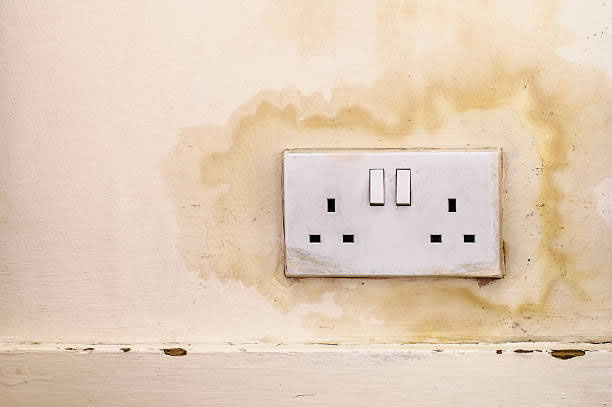
Penetrating damp is a common problem that affects many properties, especially those that are poorly maintained or located in areas with high rainfall or humidity. This type of damp occurs when water penetrates through the walls, roof or floors of a building, causing moisture to seep into the internal structure.
The consequences of penetrating damp can be serious, including damage to the structure of the building, deterioration of the plasterwork and decoration, and the growth of mold and mildew, which can cause health problems for the occupants.
Causes of Penetrating Damp
There are several possible causes of penetrating damp, including:
Faulty roof coverings, such as missing or broken tiles or slates, or cracked or damaged flat roofing materials.
Defective pointing, rendering or brickwork, which allows water to penetrate through the walls.
Poorly sealed windows and doors, which can allow water to enter through gaps or cracks.
Faulty gutters, downpipes and drainage systems, which can cause water to overflow and penetrate the walls.
Structural defects, such as cracks in the walls or foundations, which can allow water to penetrate.
High ground levels or defective damp proof courses, which can allow water to penetrate from the ground up.
Treatment of Penetrating Damp
The treatment of penetrating damp will depend on the specific cause and extent of the problem. It is important to identify and address the underlying cause of the damp in order to prevent further damage to the building.
Treatment options may include:
Repairing or replacing defective roofing materials or flashings.
Re-pointing, rendering or repairing damaged brickwork.
Sealing gaps and cracks around windows and doors.
Clearing gutters, downpipes and drainage systems of debris.
Repairing structural defects and installing damp proof courses.
Lowering ground levels and installing drainage channels or pumps.
Prevention of Penetrating Damp
Preventing penetrating damp involves a combination of regular maintenance and effective building design. Some tips to prevent penetrating damp include:
Regular inspection and maintenance of the roof, walls and drainage systems.
Ensuring that windows and doors are properly sealed and maintained.
Installing a damp proof course and ensuring that it is in good condition.
Ensuring that the ground level is lower than the internal floor level, and that there is adequate drainage around the building.
Improving ventilation in areas that are prone to damp, such as kitchens and bathrooms.
In conclusion, penetrating damp can be a serious problem that requires prompt action to prevent further damage to a building. By identifying the underlying cause of the problem and taking appropriate measures to treat and prevent it, homeowners can ensure that their property remains safe, dry and healthy for themselves and their families.